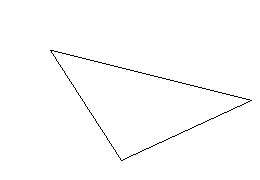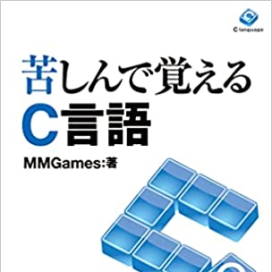Here, for those who are trying programming for the first time,
I will explain the program overview.
A program is the most fundamental way to operate a computer.
In programs, what is commonly referred to as a programming language,
We operate computers using programming languages.
Many people know that programming languages are languages for computers, but
Even so, it's still difficult to understand the program.
This is because programming languages differ significantly from natural languages.
Natural language refers to the languages used by humans.
Essentially, understanding the difference between programming languages and natural languages is
"It's often the first hurdle in understanding programming."
This chapter will explain the differences between the two languages through specific examples.
The first difference is that programming languages have
simpler grammars than natural languages.
The grammar of a programming language is simply a defined order of words.
In this chapter, we will explain using an example of a hypothetical programming language.
For example, please see the following example.
This program means to display the word "HELLO" on the screen.
“Replacing the program with Japanese words, it looks like this.”
Now, "Hello" will be displayed on the screen.
It consists of only two words, but this is the grammar of a programming language.
Most parts of speech used in programming languages are
verbs and objects.
In the previous program, "映せ" was the verb and the string "こんにちは" was the object.
Bringing the verb first is because computers primarily developed in English-speaking countries.
The aforementioned program translates to the following in natural language.
Display "Hello" on the screen.
Comparing these two, you can see the simplicity of the programming language's grammar.
| 言語 |
文章 |
| 自然言語 |
Display "Hello" on the screen. |
| Programming言語 |
REFLECT HELLO |
| Programming言語(day本語単語) |
映せ こんにちは |
People unfamiliar with programming languages may question the simple grammar.
However, as mentioned previously, programming languages are languages for controlling computers.
"The minimum level of expressiveness needed to communicate instructions to a computer is sufficient."
Among those who saw the program earlier,
You may have noticed the phrase "on screen" doesn't appear in the program.
This is because when "映せ" is written, it is defined as meaning "on the screen."
The reason for that decision is that it's more convenient for humans.
It's decided by humans, to be convenient for humans.
"If you want to give a clear command to "display on the screen," you can express it as follows:"
With this approach, we can also change the target for moving "hello."
If you rewrite it this way, the printer will print "Hello".
In the previous section, I explained that the syntax of the programming language is very simple.
There's more to the difference between programming languages and natural languages than that.
The second difference is that programming languages are
more precise than natural languages.
There is absolutely no room for ambiguity in the program; every meaning is strictly and clearly defined.
For example, let's consider the example of "drawing a triangle."
With human subjects, simply instructing them to "draw a triangle" might be sufficient.
When working with computers, "draw a triangle" is too abstract.
You must instruct with a
clear and complete procedure that contains absolutely no ambiguity.
First, we must dictate where to begin.
You must give the order with absolute clarity regarding the starting point.
If you were to perfectly specify a location on Earth, you would use latitude and longitude.
This time, as a similar method, we'll instruct it to move right by a certain number of pixels and down by a certain number of pixels from the top-left corner of the screen.
Next, I will instruct you where to draw the line.
If you specify this location to form a triangle, you can draw a triangle.
Here's an example expressed in the English programming language.
LINE 50,50 - 250,100
LINE 250,100 - 120,160
LINE 120,160 - 50,50
This would translate to the following in a Japanese programming language.
線 50,50 から 250,100
線 250,100 から 120,160
線 120,160 から 50,50
Furthermore, it translates to the following in plain Japanese.
Screen左上から右に50ミリ、下に50ミリの位置から、
右に250ミリ、下に100ミリの位置まで線を引け。
Screen左上から右に250ミリ、下に100ミリの位置から、
右に120ミリ、下に160ミリの位置まで線を引け。
Screen左上から右に120ミリ、下に160ミリの位置から、
右に50ミリ、下に50ミリの位置まで線を引け。
Following these steps carefully will produce an image like this.

As mentioned above, a key characteristic of "programming languages" is instructing through extremely clear procedures.
The instructions must be unambiguous and prescribe every action in detail.
Another example would be, if you wanted to have a robot make you a cup of instant noodles.
"Simply telling someone to 'make instant noodles' isn't enough."
One meter forward, turn 90 degrees to the right, extend your arm 10 centimeters forward, ...
by a clear and distinct procedure, from taking out the ramen to filling the kettle with water, lighting the flame, and pouring.
Every action must be meticulously instructed by humans.
Also, for robots (computers),
These actions are just actions, and
each one is an independent action.
The robots do not recognize that their actions constitute the steps to make a cup noodle.
I'm just repeatedly performing actions according to given instructions.
While in motion, if it bumps into something and spills the kettle's hot water,
It's just one operation for the computer and
not considered a mistake.
The robot continues its programmed actions while holding a kettle without hot water.
Even this might seem very strict and unambiguous compared to dealing with humans,
To be honest, even the procedure outlined here still leaves room for ambiguity.
"In fact, even the instruction 'underline' is a very ambiguous instruction."
A computer screen is made up of points, called pixels.
We must instruct every single location where to draw a pixel on the screen.
Here's an example that clearly specifies the position of each pixel needed to draw a triangle.
DOT 50,50
DOT 51,50
DOT 52,50
DOT 53,50
DOT 54,51
DOT 55,51
DOT 56,51
・
・
However, frighteningly, even the command "draw a pixel" is ambiguous.
Essentially, computers don't know the concept of pixels.
Therefore, we must clearly instruct what it means to "draw a pixel."
"If the command "draw a pixel" were made perfectly unambiguous,"
コンピュータに接続されているOO番目の装置の記憶しているnumericsの内、
32050番目のnumericsを0に設定せよ。
"This becomes an instruction that is very difficult for humans to understand."
Here, we'll consider a display with a width of 640 pixels as an example.
Calculating, the 32050th point will be located at 50 dots below and 50 dots to the left of the top-left corner of the screen.
In this context, "the OOth device" refers to the display (specifically, the video card).
"Also, "set it to zero" refers to the color, as zero represents black."
In this way, if we break it down to its most fundamental level, the operation of a computer is...
1つのMemorizing numbers.。(記憶)
1つのnumericsが0であるか判断する。(判断)
2つのnumericsを足し算する。(演算)
"And furthermore, when I say addition here, I only mean the four cases: 0+0, 0+1, 1+0, and 1+1."
It turns out there are only three.
However, by combining these three, you can perform even the most complex calculations.
However, this is too inconvenient for humans.
Therefore, various features have been added to modern computers to make them more user-friendly for humans.
Therefore, nowadays, programming offers a variety of convenient features as well.
You don't need to think so rigorously and meticulously.
However, even in modern times (2023), there has been absolutely no change in the fundamental workings of computers.
Therefore, all programs are ultimately broken down into very simple calculations.
And computers are simply repeating simple calculations, really (around a trillion times per second).
It's important to remember that a computer is a strict machine when creating a program.

